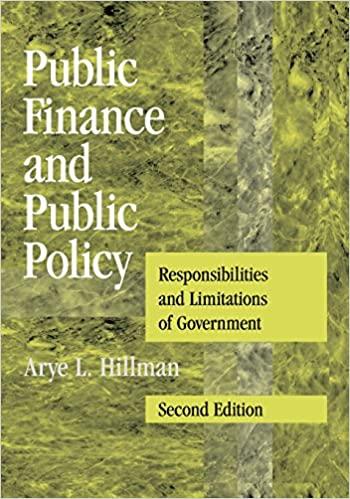Question
RETIREMENT PLANNING Bob Davidson is a 46-year-old tenured professor of marketing at a small New England business school. He has a daughter, Sue, age 6,
RETIREMENT PLANNING Bob Davidson is a 46-year-old tenured professor of marketing at a small New England business school. He has a daughter, Sue, age 6, and a wife, Margaret, age 40. Margaret is a potter, a vocation from which she earns no appreciable income. Before she was married and for the first few years of her marriage to Bob (she was married once previously), she worked at a variety of jobs, mostly involving software programming and customer support. Bobs grandfather died at age 42; Bobs father died in 1980 at the age of 58. Both died from cancer, although unrelated instances of that disease. Bobs health has been excellent; he is an active runner and skier. There are no inherited diseases in the family with the exception of glaucoma. Bobs most recent serum cholesterol count was 190. Bobs salary from the school where he works consists of a nine-month salary (currently $95,000), on which the school pays an additional 10 percent into a retirement fund. He also regularly receives support for his research, which consists of an additional two-ninths of his regular salary, although the college does not pay retirement benefits on that portion of his income. (Research support is additional income; it is not intended to cover the costs of research.) Over the 12 years he has been at the college his salary has increased by 4 to 15 percent per year, although faculty salaries are subject to severe compression, so he does not expect to receive such generous increases into the future. In addition to his salary, Bob typically earns $10,000 to 20,000 per year from consulting, executive education, and other activities. In addition to the 10 percent regular contribution the school makes to Bobs retirement savings, Bob also contributes a substantial amount. He is currently setting aside $7,500 per year (before taxes). The maximum tax-deferred amount he can contribute is currently $10,000; this limit rises with inflation. If he were to increase his savings toward retirement above the limit, he would have to invest after-tax dollars. All of Bobs retirement savings are invested with TIAACREF (Teachers Insurance and Annuity Association-College Retirement Equities Fund; home page: www.tiaa-cref.org), which provides various retirement, investment, and insurance services to university professors and researchers. Bob has contributed to Social Security for many years as required by law, but in light of the problems with the Social Security trust fund he is uncertain as to the level of benefits that he will actually receive upon retirement. (The Social Security Administrations website is www.ssa.gov.) Bobs TIAA-CREF holdings currently amount to $137,000. These are invested in the TIAA long-term bond fund (20 percent) and the Global Equity Fund (80 percent). The Global Equity Fund is invested roughly 40 percent in U.S. equities and 60 percent in non-U.S. equities. New contributions are also allocated in these same proportions. In addition to his retirement assets, Bobs net worth consists of his home (purchase price $140,000 in 1987; Bobs current equity is $40,000); $50,000 in a rainy-day fund (invested in a short-term money market mutual fund with Fidelity Investments); and $24,000 in a Fidelity Growth and Income Fund for his daughters college tuition. He has a term life insurance policy with a value of $580,000; this policy has no asset value but pays its face value (plus inflation) as long as Bob continues to pay the premiums. He has no outstanding debts in addition to his mortgage, other than monthly credit-card charges. Should Bob die while insured, the proceeds on his life insurance are tax free to his wife. Similarly, if he dies before retirement, his retirement assets go to his wife tax free. Either one of them can convert retirement assets into annuities without any immediate taxation; the monthly income from the annuities is then taxed as ordinary income. Bobs mother is 72 and in good health. She is retired and living in a co-op apartment in Manhattan. Her net worth is on the order of $300,000. His mother-in-law, who is 70, lives with her second husband. Her husband is 87 and has sufficient assets to pay for nursing home care, if needed, for his likely remaining lifetime. Upon her husbands death, Bobs mother-in-law will receive ownership of their house in Newton, Massachusetts, as well as one-third of his estate (the remaining two-thirds will go to his two children). Her net worth at that point is expected to be in the $300,000400,000 range. Bobs goal is to work until he is 60 or 65. He would like to save enough to pay for his daughters college expenses, but not for her expenses beyond that point. He and his wife would like to travel, and do so now as much as his job and their family responsibilities permit. Upon retirement he would like to be able to travel extensively, although he would be able to live quite modestly otherwise. He does not foresee moving from the small town where he now lives.
Refer to the Retirement Planning case. From the corre-sponding exercise in Chapter 3, review the design of a spread-sheet for this problem.
a. Develop a base case. You may create any data you need for this purpose. Why is this base case appropriate for this situation?
b. Perform an appropriate sensitivity analysis. Which param-eters have the most significant impact on the results?
Step by Step Solution
There are 3 Steps involved in it
Step: 1

Get Instant Access to Expert-Tailored Solutions
See step-by-step solutions with expert insights and AI powered tools for academic success
Step: 2

Step: 3

Ace Your Homework with AI
Get the answers you need in no time with our AI-driven, step-by-step assistance
Get Started


